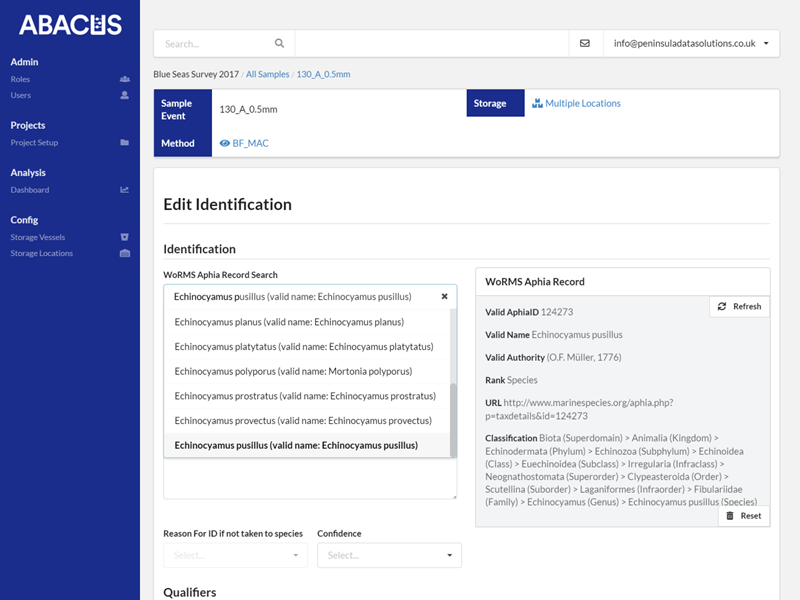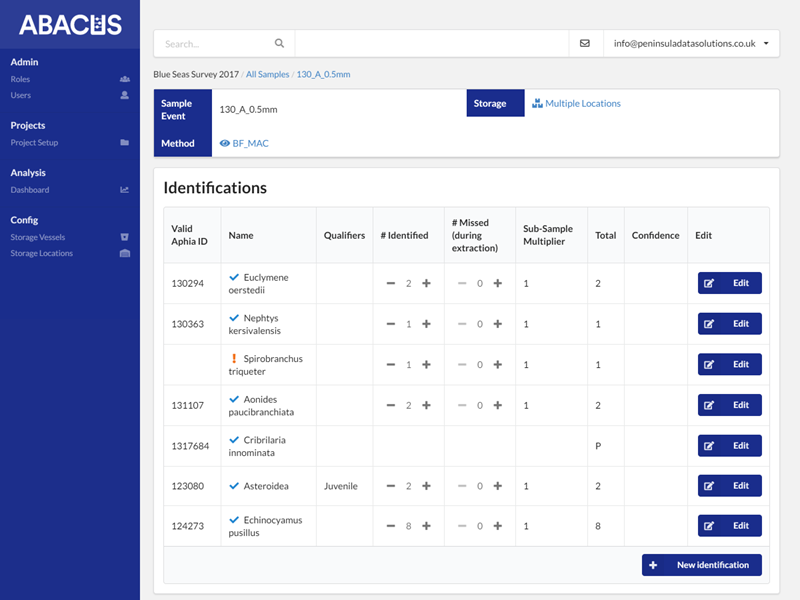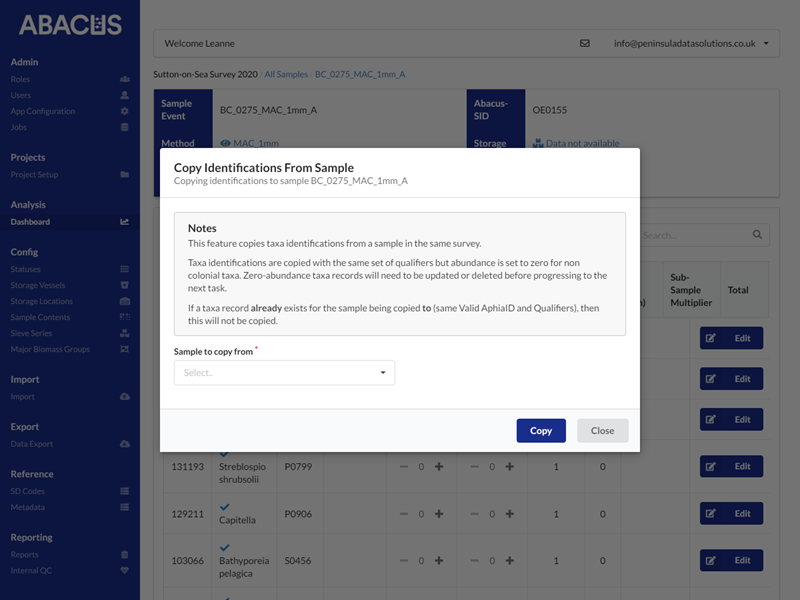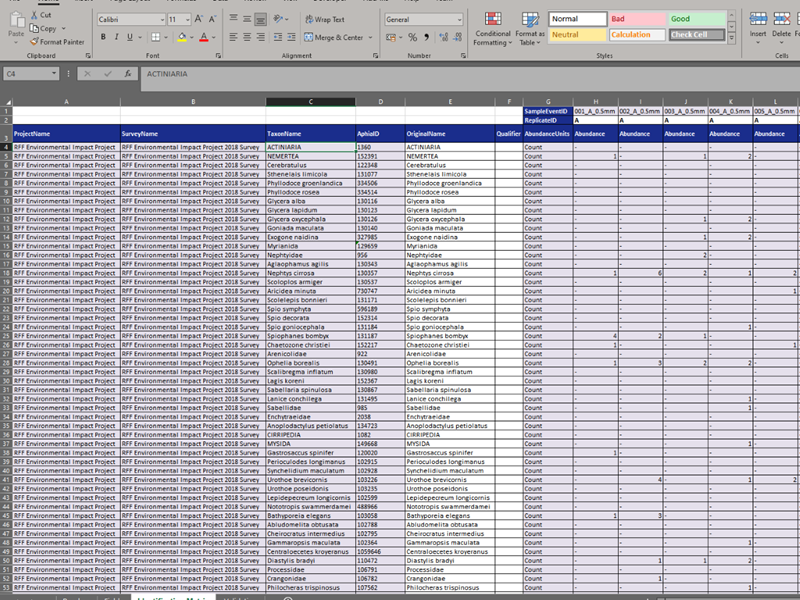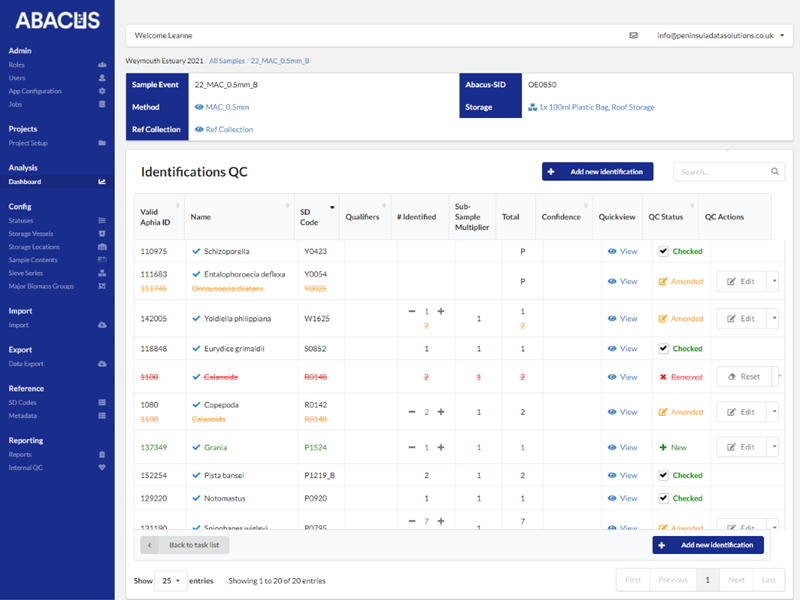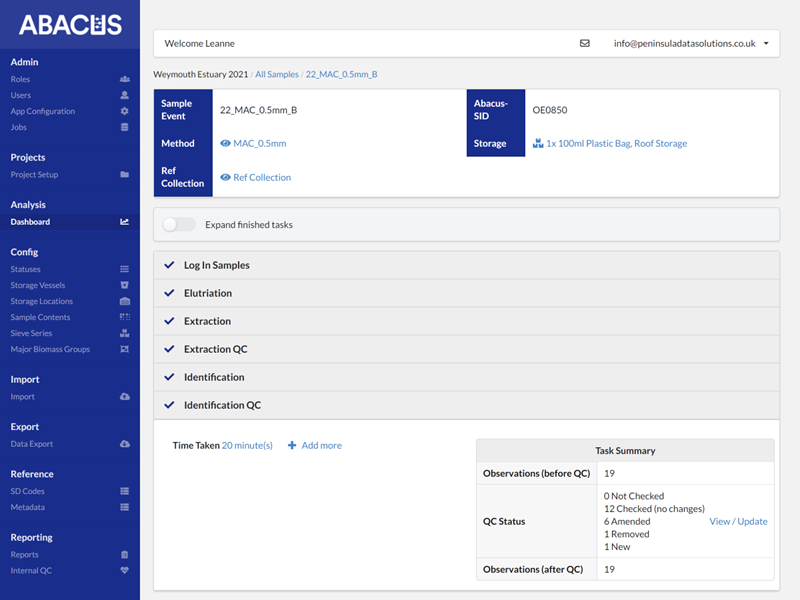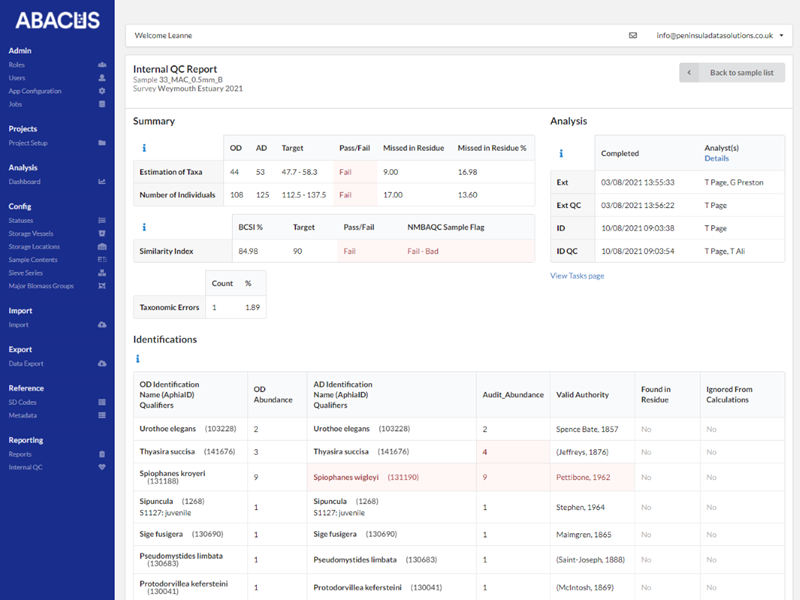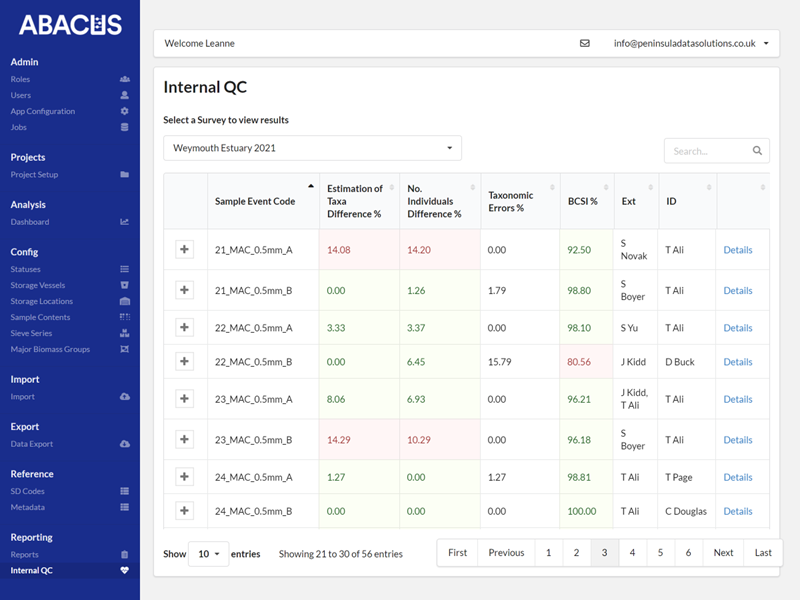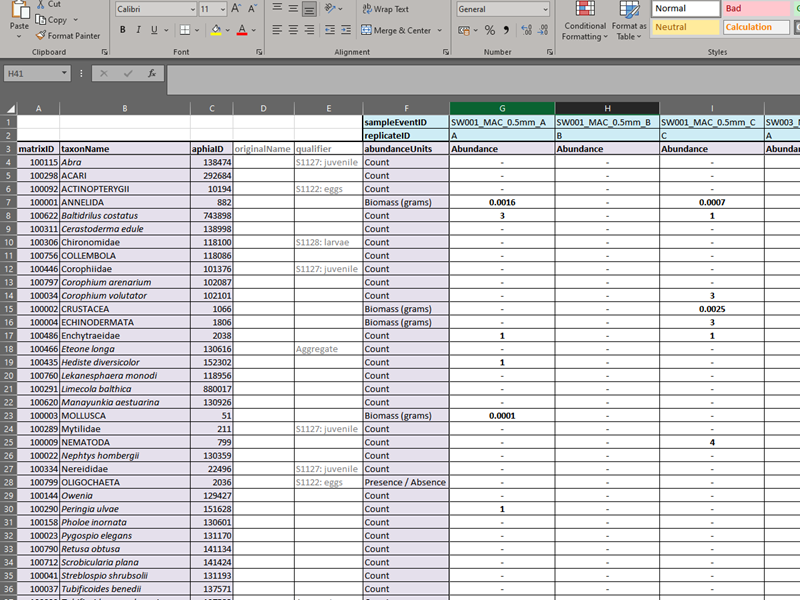Macrobenthic analysis was the first type of sample analysis data supported by ABACUS. Since it's first usage in 2018, macrobenthic analysis features have been continually improved and now possesses a range of features and processes that help to reduce the time taken to record macrobenthic data, improve the quality of the data and provide the tools and features to perform effective data management. All of this is backed up by its usage in real-world projects since 2018.
Clients using ABACUS for macrobenthic analysis have reported a reduction of 20% staff time in the data entry tasks alone. Combining this with substantially improved data quality, management, reporting and single-click exports, means laboratories are able to reduce the cost of processing macrobenthic samples, and get higher quality data available for release sooner.
Added to ABACUS in 2021, the Internal QC (Quality Check) report acts as a tool to provide internal feedback on the effectiveness and accuracy of staff involved in the extraction and identification of taxa during macrobenthic analyses. This can be used to identify training requirements for staff or alert to potential risk areas in projects that may require further quality checking.

